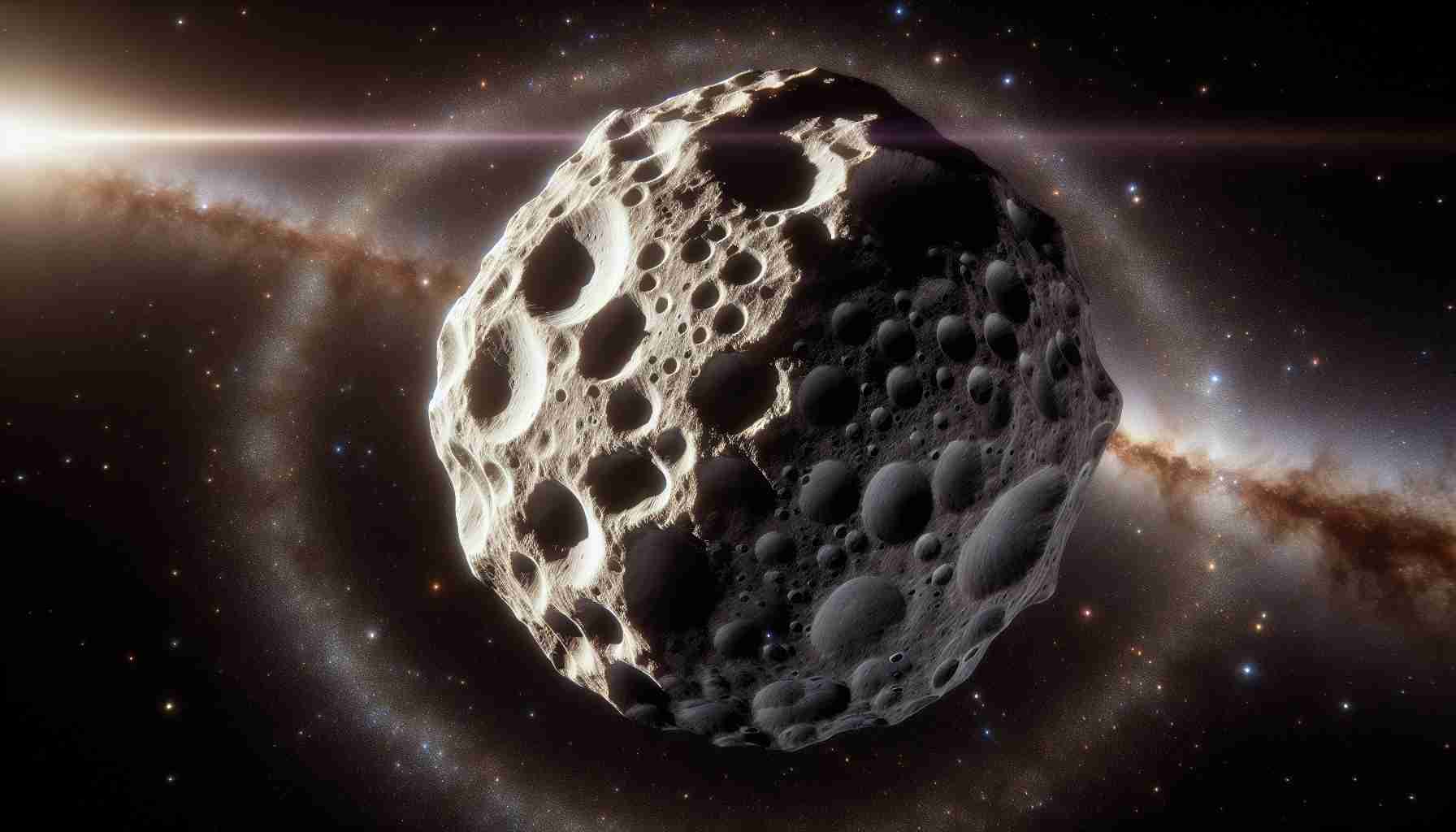In 2029, Asteroid Apophis, also known as the “God of Chaos”, will perform a rare cosmic dance with Earth, promising to unveil new insights into celestial bodies and their interaction with planetary gravity. This colossal asteroid, measuring 340 meters in length, will pass within a mere 32,000 kilometers of our planet, a distance closer than that of many orbiting satellites.
The Encounter of Apophis and the Enigmatic Tremors Although the proximity of Apophis poses no threat of collision with Earth, astronomers anticipate that its passage could trigger what scientists term as “celestial seisms.” These phenomena, akin to terrestrial earthquakes, can induce significant alterations in the asteroid’s structure and composition.
The Influence of Earth’s Gravity on Apophis As Apophis approaches Earth, the gravitational interaction could lead to pronounced effects on its surface, such as material displacements and surface deformations. This rendezvous provides a unique opportunity for scientists to observe real-time changes in an asteroid under the gravitational sway of a planet.
Unlocking the Mysteries of Celestial Seismology Celestial seismology involves studying the tremors or vibrations that occur in space entities, offering insights into their internal dynamics and structures. The impending close approach of Apophis to Earth may induce vibrations that could reshape its surface, shedding light on its composition and internal architecture.
The OSIRIS-APEX Mission: A Glimpse into Real-Time Changes NASA’s OSIRIS-APEX mission, an iteration of the OSIRIS-REx probe, is poised to monitor Apophis during its 2029 encounter with Earth. By capturing data on structural and rotational modifications induced by the close proximity, this mission aims to enhance our understanding of asteroid dynamics and further planetary defense models.
Apophis: A Celestial Educational Odyssey The impending close pass of Apophis represents not only a significant event for scientists but also an educational experience for humanity. This cosmic spectacle holds the potential to unravel new cosmic secrets, fostering collaborations across various scientific disciplines and expanding our cosmic comprehension.
This asteroid’s journey serves as a compelling reminder of the intricate interplay between gravitational forces and the evolution of celestial bodies, offering a glimpse into the awe-inspiring processes unfolding in the vast cosmos around us.
Exploring New Frontiers with Asteroid Apophis: Unraveling Celestial Mysteries Beyond 2029
As the cosmic clock ticks closer to the fateful rendezvous between Earth and Asteroid Apophis in 2029, anticipation brews not just for the celestial spectacle but also for the enigmatic realm of celestial seismology awaiting exploration. While the previous article shed light on the impending encounter and its potential seismic repercussions, there are additional facets to this cosmic tale that beg further investigation.
The Puzzling Enigma of Apophis’ Origin and Composition One of the paramount questions lingering in the minds of astronomers pertains to Apophis’ mysterious origins and the composition of its core. What primordial secrets lie buried within this colossal rock hurtling through the void of space, and what clues can its composition offer about the early formation of our solar system?
Key Challenges: Deciphering the Cosmic Jigsaw Unveiling the secrets of celestial seismology with Apophis presents its own set of challenges. How do scientists discern between natural seismic activity induced by the asteroid’s close approach and internal vibrations triggered by its interactions with Earth’s gravitational pull? Distinguishing these phenomena is crucial for interpreting the data gathered during this cosmic dance.
Controversies and Contradictions: The Clash of Hypotheses Within the realm of celestial seismology, conflicting theories abound regarding the structural changes that may manifest on Apophis during its proximity to Earth. Some experts argue that the asteroid’s surface will remain largely unchanged, while others posit radical alterations driven by gravitational tides. Resolving these debates is essential for advancing our understanding of asteroid dynamics.
Advantages and Disadvantages of Close Encounters The proximity of Apophis to Earth offers a rare vantage point for studying the transient effects of gravitational forces on celestial bodies. This close encounter presents a unique opportunity for real-time observations, allowing scientists to witness dynamic changes in Apophis’ structure. However, the inherent risk lies in accurately predicting the outcomes of such interactions and ensuring the safety of future planetary missions.
The narrative of Asteroid Apophis intertwines with a tapestry of cosmic exploration, beckoning humanity to unravel the mysteries hidden within the fabric of the universe. As we brace for the celestial ballet between Earth and the “God of Chaos,” the questions that linger and the challenges that loom only serve to deepen our quest for understanding the cosmic symphony playing out in the vast expanse of space.
For further insights into the evolving saga of celestial bodies and the mysteries of space, explore the latest discoveries and missions in astronomy at NASA’s official website.













